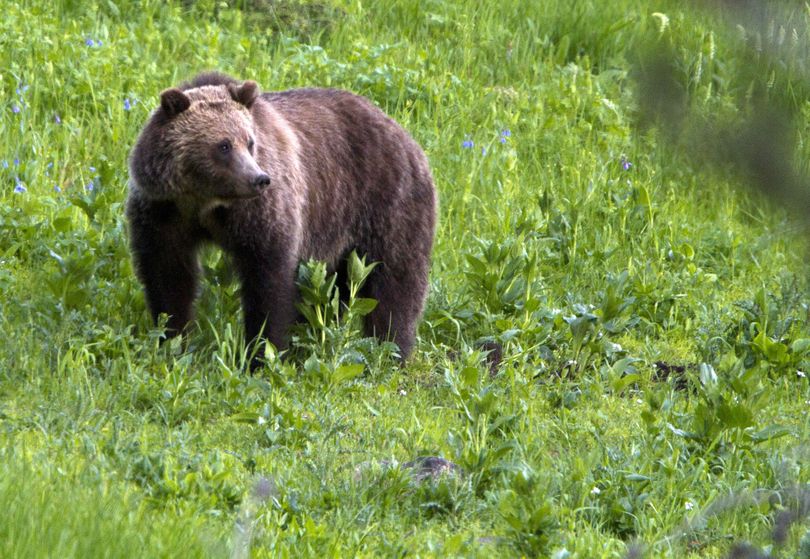Grizzly suspected of killing Yellowstone hiker captured

Update 8/11/15 -- One cub has been caught in addition to the female grizzly and rangers are trying to catch another cub seen in a trail camera image put out near the seen of the incident.
WILDLIFE -- A female grizzly bear suspected of killing a hiker on Friday has been captured in a trap today, Yellowstone National Park officials report. The cub suspected of being with her was not caught.
If DNA testing determines the grizzly is responsible for the hiker's death, it will be euthanized, they said.
Seasonal park employee Lance Crosby, 63, of Billings was killed last week while hiking alone off-trail without bear spray, according to officials. His body was found Friday about a half-mile from the nearest developed trail, near an area known as Lake Village.
A park ranger found him “partially consumed” a half-mile from the Elephant Back Loop Trail in a “popular off-trail area he was known to frequent,” according to a National Park Service statement.
Crosby was the sixth person killed since 2010 by grizzlies in the greater Yellowstone area, which has an estimated 750 grizzlies and includes the park and surrounding portions of Montana, Idaho and Wyoming.
Here's more from the Associated Press:
Encounters between humans and grizzlies bears have risen sharply in recent decades as the region’s grizzly population expanded. But relatively few lead to death or injury, and park officials say the risk of being attacked by a bear is comparable to the chances of being struck by lightning.
Park biologists set a trap Friday that caught a female bear at the scene of the attack but not the cub believed to have been with her.
If testing confirms the sow was involved in Crosby’s death, it will be killed, Yellowstone Superintendent Dan Wenk said. The cub, if captured, could be killed or adopted by a zoo or rehabilitation center.
Crosby had worked as a nurse in the park’s medical clinics over five seasons and was described as an experienced hiker, officials said.
“At this point in time, I have no knowledge that it could have been avoided,” Wenk said. “He was in an area that’s frequently used, a popular area that people went to. It’s not like he was bushwhacking through the forest.”
Bruising around puncture wounds on Crosby’s forearms suggested he had tried to defend himself, officials said.
The victim’s family said through a park spokeswoman that they had no plans to release any statements or conduct interviews and asked that all media requests be directed to park officials.
Yellowstone receives more than 3 million visits a year from tourists who journey from around the world to view its geysers and other thermal features and abundant wildlife.
Hikers who enter backcountry areas are advised to stay on trails, travel in groups of three or more and carry mace-like bear spray in case of an encounter.
“It’s an individual’s personal choice to carry bear spray. It’s something we highly recommend because it has been shown to be an effective deterrent in the case of a bear charge,” park spokeswoman Amy Bartlett said.
The last fatality caused by a bear attack occurred in 2011, a year when two people were killed in separate incidents. Those deaths were the first to occur in the park in 25 years.
“Since 1916, the first year anyone was recorded being killed by a bear in the park, there have been eight fatalities,” said Yellowstone Park spokeswoman Julena Campbell. “It’s very rare.”
